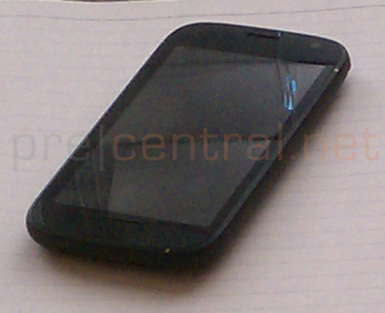
The phone looks like it is about as big as the Pre 3, the latest version of the Pre lineup that features Palm’s WebOS software. Hewlett-Packard has taken over developing and manufacturing the Pre lineup after it announced it would buy palm for $1.2 billion. The company unveiled a new lineup of smartphones — the Veer and the Pre 3 — along with a WebOS powered tablet. But a phone packing a form-factor similar to the iPhone and lacking a keyboard was absent from the launch.
[aditude-amp id="flyingcarpet" targeting='{"env":"staging","page_type":"article","post_id":252965,"post_type":"story","post_chan":"none","tags":null,"ai":false,"category":"none","all_categories":"business,mobile,","session":"B"}']Research in Motion, Apple and Google all feature phones that carry that form factor — all of which have been pretty successful. Palm has always chosen to have a slide-out or a vertical keyboard on its phones — which takes away some screen real estate and doesn’t necessarily meet the market demand for a touchscreen keyboard. If the Stingray, the codename for a keyboard-less WebOS, is real, then HP is looking to directly compete with the rest of the market in that form factor.
Palm had high hopes for its WebOS mobile operating system. The phone manufacturer said it expected thousands of developers to quickly begin making applications for the platform. Unfortunately, all those developers flocked to the iPhone operating system, and then to Google’s Android operating system. To date, there are more than 300,000 apps on the Apple App Store and more than 100,000 on the Android marketplace. WebOS still has a slight edge on Apple in terms of multitasking, but it hasn’t yet picked up the same development community that’s present on Android and the iPhone operating system.
AI Weekly
The must-read newsletter for AI and Big Data industry written by Khari Johnson, Kyle Wiggers, and Seth Colaner.
Included with VentureBeat Insider and VentureBeat VIP memberships.
HP’s acquisition of Palm followed a relatively weak launch of its Pre and Pixi devices. During a conference call discussing the acquisition, HP executives emphasized that the deal to acquire smartphone maker Palm was about more than phones. The copany clearly had much higher aspirations for the mobile operating system. HP has plans to get consumers to buy multiple WebOS devices by creating multiple ways to synchronize data across the software.
Each WebOS-powered device can synchronize with other WebOS devices using HP’s Touchstone software. That means if a user receives a text message on their phone, they can see the message on other WebOS-enabled devices — and share a number of other apps. Users can, for example, touch a TouchPad with a Pre 3 phone and transfer whatever is on the screen on the TouchPad to the Pre 3.
[Photo: precentral.net]
VentureBeat's mission is to be a digital town square for technical decision-makers to gain knowledge about transformative enterprise technology and transact. Learn More
